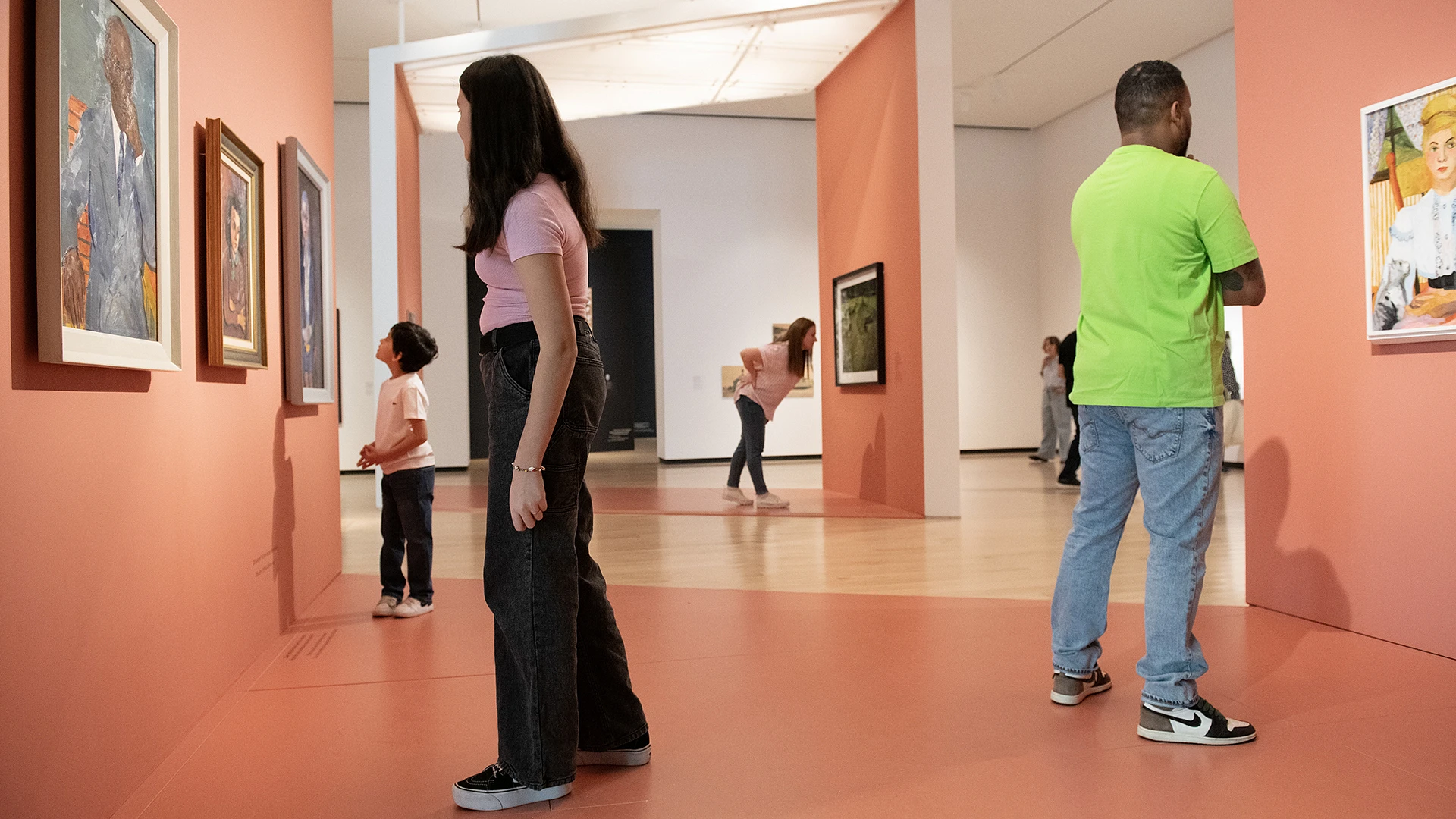![[pictogramme] (Recherche)](https://d2vz292c8bsovn.cloudfront.net/eyJidWNrZXQiOiJtbmJhcS1hc3NldHMiLCJrZXkiOiJwcm9kdWN0aW9uL1Byb2dyYW1tYXRpb24vRXhwb3NpdGlvbnMvTm91cy9leHBvc2l0aW9uLW5vdXNfRWRkeS1GaXJtaW4tZGl0LUFuby5qcGciLCJlZGl0cyI6eyJ3ZWJwIjp7InF1YWxpdHkiOjkwfSwicmVzaXplIjp7IndpZHRoIjo2MDAsImhlaWdodCI6ODM3LCJmaXQiOiJpbnNpZGUifSwic2hhcnBlbiI6dHJ1ZX19)
View from the exhibition Us // Photo : MNBAQ, David Cannon
Exhibition
A Philosophical Voyage

Us aims to spark individual and collective reflection, offering converging views of the self and the other by holding up a mirror that reflects our society. This selection of 70 pieces encompassing all periods of our collections (ancient, modern, and contemporary art) will take you on a unique philosophical voyage that explores three universal themes: identities, migrations, and territories.
Marie-Claude Pratte’s major work Portraits de société inspired this exhibition. The artist’s stereotyped representations of various members of society on 50 small boards explore caricature and the impact of prejudice.
Like Pratte, other featured artists examine themes related to identity:
The second part of the exhibition highlights mass migrations of different groups. What causes people to move? How do the artists approach this theme? Works by Jinyoung Kim, Pitseolak Ashoona, Davidialuk Alasua Amittu, Couturier Lafargue, and Ari Bayuaji broach this sensitive topic.
How do humans, plants, and animals share territory, whether real or imagined? How do they relate to each other? Many of the Québec artists in our collection have delighted in exploring this profound subject, from Théophile Hamel in the 19th century to Jean Paul Riopelle and Caroline Elijassiapik today. You are invited to take part in this reflection on the idea of territory and those who inhabit it.
This exhibition also has a space dedicated to Alfred Pellan, paying tribute to the donors who made exceptional contributions to the financing of the Pierre Lassonde Pavilion. You might even be one of them! The space brings together some 30 works, including a selection of 16 masks and 10 mobile sculptures that rotated permanently through the artist’s studio.
The exhibition also displays works that have been popular with the general public over the years.
The themes underlying the circuit allow the works to coexist and interact through a host of interpretations, including philosophical ones. Through an approach that is sometimes playful, sometimes emotional, and sometimes critical, Us lets people get to know each other and themselves. It’s a chance for people to come together, awaken, and be filled with wonder… and above all, become more open to the world.
“Unlike what the public is used to seeing in museums, this playful, colourful exhibition is not built around a timeline or a grand narrative through an artist’s life, but rather around specific questions and themes.”Léa Harvey, Le Soleil
“Offers a converging view of the self, the other, and the collective through themes of identities, migrations, and territories.”
Yves Leclerc, Le Journal de Québec